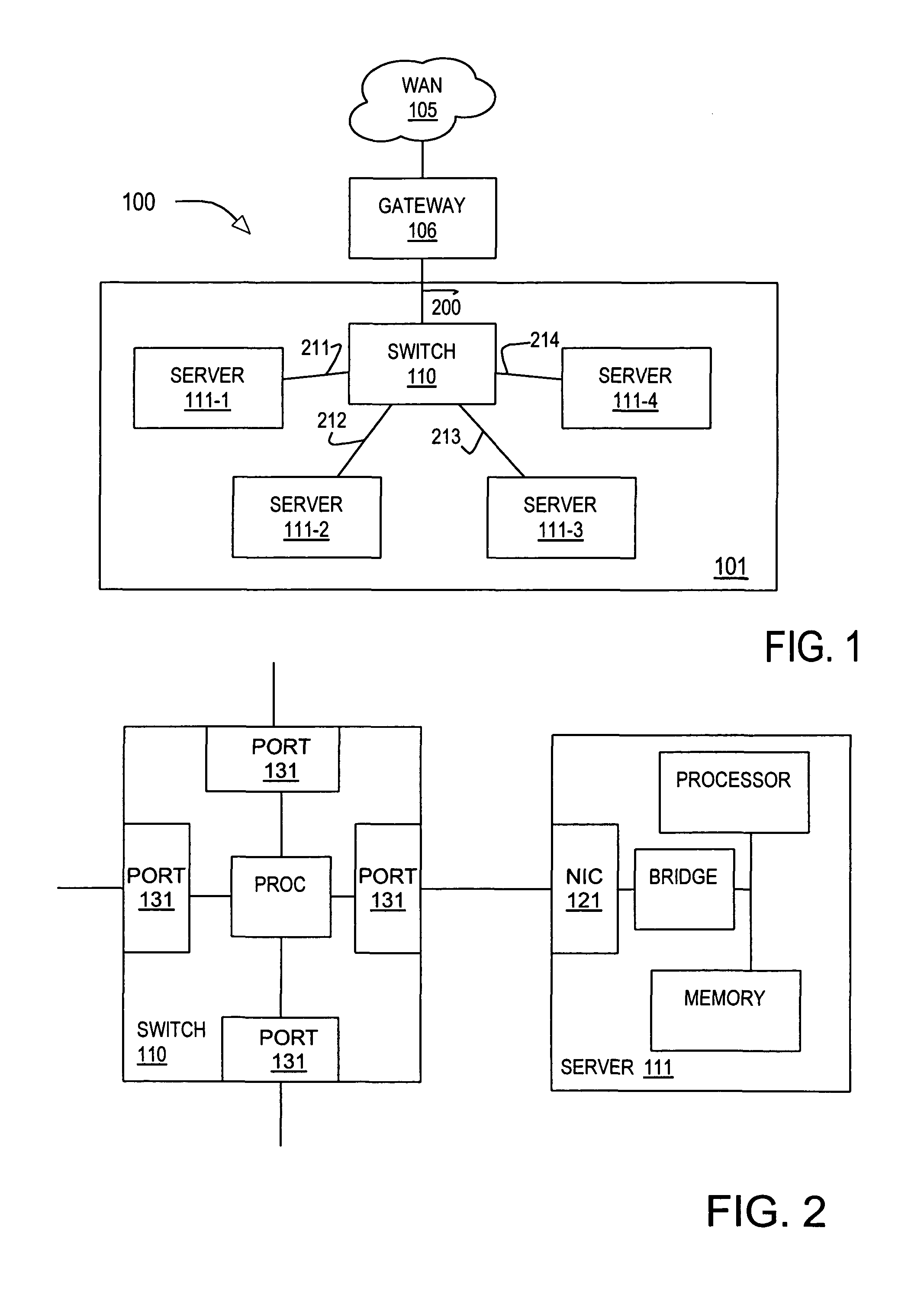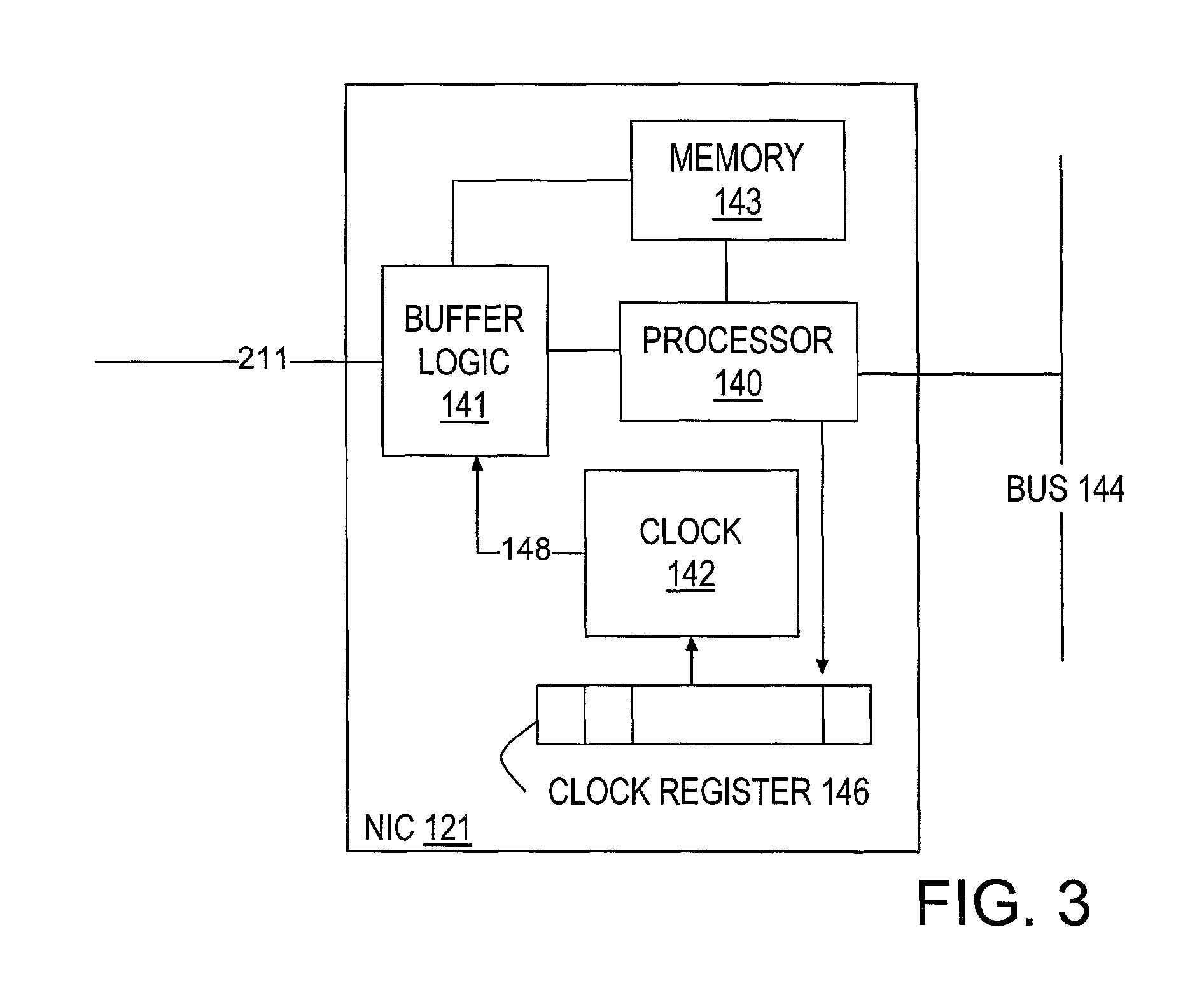Conserving energy in a data processing network
a data processing network and energy conservation technology, applied in the field of network computing, can solve the problems of limiting the usable bandwidth of the server-switch link, physical inability to operate at the maximum bandwidth of all the links at the same time, and reducing so as to reduce the operating frequency of the server link, save energy consumption, and reduce the effect of performance loss
- Summary
- Abstract
- Description
- Claims
- Application Information
AI Technical Summary
Benefits of technology
Problems solved by technology
Method used
Image
Examples
Embodiment Construction
[0015]Turning now to the drawings, FIG. 1 is a block diagram of selected features of a data processing network 100 according to one embodiment of the present invention. In the depicted embodiment, data processing network 100 includes a server cluster 101 that is connected to a wide area network (WAN) 105 through an intermediate gateway 106. WAN 105 may include a multitude of various network devices including gateways, routers, hubs, and so forth as well as one or more local area networks (LANs) all interconnected over a potentially wide-spread geographic area. WAN 105 may represent the Internet in one embodiment.
[0016]Server cluster 101 as depicted includes a central switch 110 that is connected to the gateway 106 via a network link 200. Cluster 101 further includes a plurality of servers, four of which are depicted in FIG. 1 and indicated by reference numerals 111-1, 111-2, 111-3, and 111-4. Each server 111 is connected to switch 110 via a dedicated network link (reference numerals...
PUM
 Login to View More
Login to View More Abstract
Description
Claims
Application Information
 Login to View More
Login to View More - R&D
- Intellectual Property
- Life Sciences
- Materials
- Tech Scout
- Unparalleled Data Quality
- Higher Quality Content
- 60% Fewer Hallucinations
Browse by: Latest US Patents, China's latest patents, Technical Efficacy Thesaurus, Application Domain, Technology Topic, Popular Technical Reports.
© 2025 PatSnap. All rights reserved.Legal|Privacy policy|Modern Slavery Act Transparency Statement|Sitemap|About US| Contact US: help@patsnap.com



